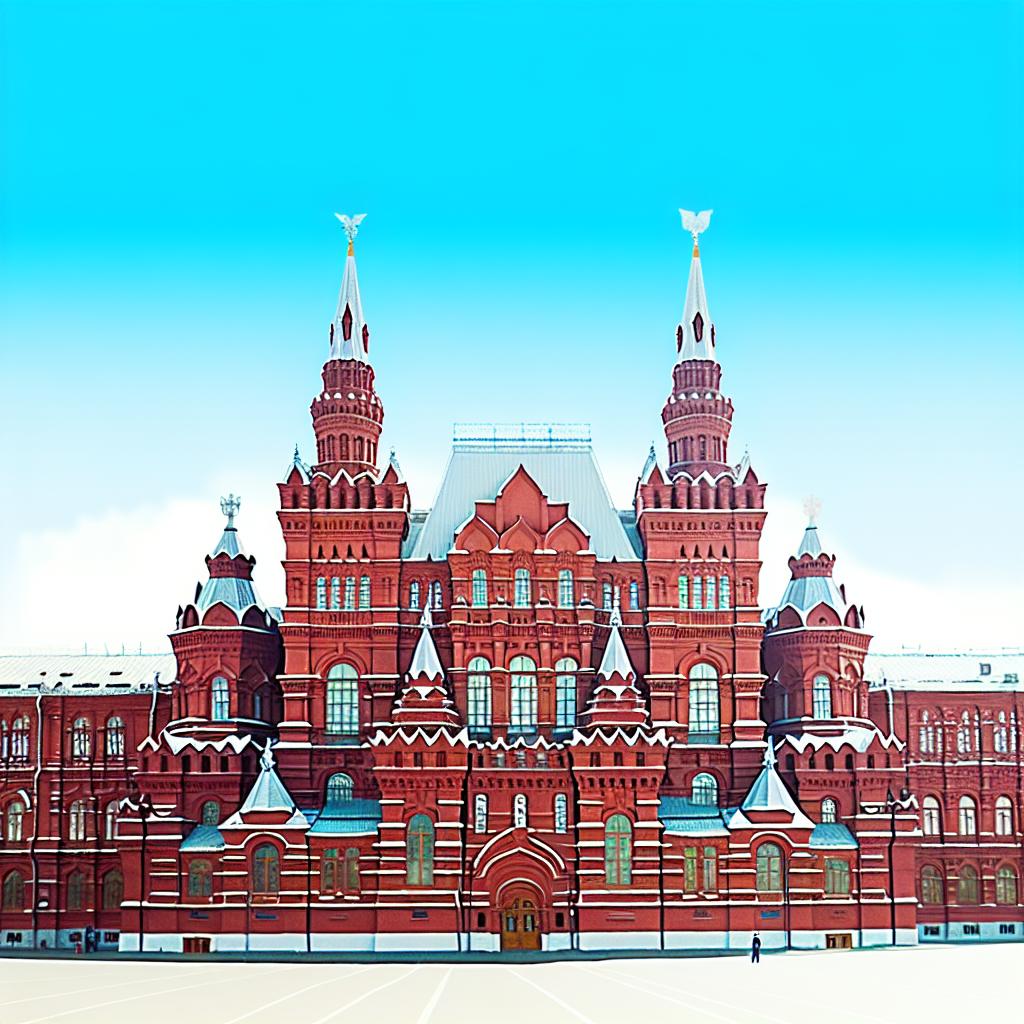The State Historical Museum: An Overview
The State Historical Museum, prominently situated in Red Square, Moscow, Russia, acts as a vital custodian of the nation’s historical artifacts, offering an expansive narrative of Russia’s storied past. With its establishment dating back to 1872, the museum serves as an irreplaceable cultural landmark. It meticulously bridges the historical divide between the past and present through its extensive collection of exhibits.
Historical Background
The inception of the State Historical Museum can be attributed to Emperor Alexander II of Russia, under whose auspices the foundation was laid with the purpose of preserving and presenting the rich historical and cultural treasures of Russia. Construction of the museum began in 1875 on the site of the principal medicine store of Moscow and was completed in 1883. Envisioned by architect Vladimir Sherwood in the prevailing Russian Revival style, the museum building is a harmonious blend of traditional Russian architectural aesthetics and elements reflecting the European styles prevalent at the time. This architectural amalgamation enhances the museum’s status as a historical landmark in itself, reflecting Russia’s transitional journey from past monarchist eras to its current form.
Exhibits and Collections
The museum’s vast collection is a treasure trove for historians, scholars, and visitors alike, covering a broad spectrum of historical artifacts, paintings, and relics. The exhibits thoughtfully span numerous eras of Russian history, tracing the evolution of civilization in this region from ancient times to the modern era. A distinctive array of archeological finds forms a crucial part of these collections, highlighting relics from ancient civilizations that once thrived across what is now Russian territory. These archaeological artifacts provide a critical insight into the lives, beliefs, and technological advancements of ancient cultures. Beyond archeology, the museum also places significant emphasis on showcasing the rich and diverse cultural heritage of the country. Exhibits dedicated to folklore allow visitors to engage with traditional Russian myths and legends, while the art collections feature both historical and contemporary pieces, providing an aesthetic bridge between different epochs.
Permanent Exhibitions
Central to the museum’s appeal are its permanent exhibitions, which offer detailed insights into distinct epochs of Russian history. These meticulously curated sections chronicle the progression of societal developments from the early Slavic tribes to the establishment of the modern Russian state. Each period is encapsulated through an array of artifacts and narratives that delve into themes such as the Mongol invasion, a transformative period that reshaped the socio-political landscape of medieval Russia. The era of Ivan the Terrible, known for its significant territorial expansions and centralized state governance, comes to life through the exhibits, offering visitors a tangible connection to a pivotal time in history. Similarly, the era of the Romanovs, which marked the last imperial dynasty to rule over Russia, is represented through artifacts and narratives that outline the dynasty’s influence on the cultural, political, and economic canvas of the nation.
Special Features
The State Historical Museum is as renowned for its architectural features as it is for its collections. The museum’s façade is a testament to exquisite craftsmanship, adorned with intricate ornamental details that pay homage to the rich traditions of Russian architecture. The interior further enhances this historical ambiance, with halls and galleries decorated in a style reminiscent of the opulence and grandeur of bygone eras. As visitors walk through these spaces, they encounter frescoes, mosaics, and wooden panels — each detail crafted with precision and care, contributing to the overall historical atmosphere of the museum. These elements not only augment the aesthetic appeal of the museum but also reflect a tribute to the artistic flourishes that were prominent in historical Russian craftsmanship.
For those who aspire to visit or delve deeper into the offerings of the State Historical Museum, a wealth of information is obtainable through their official website. The website serves as a comprehensive resource, offering details on current exhibitions, ticket pricing, and visitor guidelines, enabling prospective visitors to better plan their journey into the depths of Russian history.
To sum up, the State Historical Museum stands not only as a repository of artifacts but also as a significant chronicle of Russia’s diverse and profound past. Its comprehensive collections coupled with its historical significance make it an essential resource for those seeking to unravel the historical narratives that have played a pivotal role in shaping the nation. The museum reflects the chronicles of a nation that has survived invasions, undergone revolutions, and eventually emerged as a modern state with its unique identity intact.

